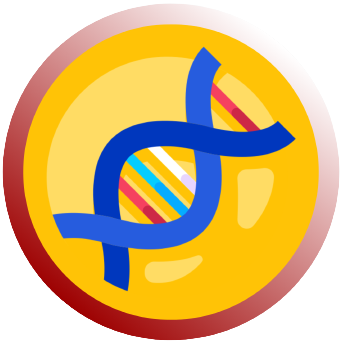Bhargavi Venkataraman — McMaster University Bachelor of Health Sciences 2024
In the 21st century, technology pervades every facet of life and is increasingly allowing individuals to take control of more aspects of their lives at their own discretion. Health monitoring is one such area which has shown extensive progress through the use of consumer gadgets, primarily in the form of wearable technology.
Smartwatch manufacturers like Fitbit and Garmin have become household names and their prevalence has allowed more and more consumers to manage their exercise regimen, heart health and dietary requirements in a convenient manner. Aside from the standard pedometer, heart rate sensing and sleep tracking features, newer smartwatches are also starting to include inbuilt EKGs, electrodermal sensors, blood oxygen level tracking and more.1These features can help users detect things like atrial fibrillation (a common sign of stroke), physical signs of excessive stress through electrical changes in sweat levels, and abnormal blood oxygen levels, which could be a sign of anything from lung function issues to neurological disorders.1
This advanced kind of monitoring allows consumers to notice symptoms of critical illnesses earlier and get professional help before their conditions worsen, making these gadgets a valuable asset for monitoring individual health. Smartwatches are not the only health monitoring consumer gadgets that are gaining popularity. For example, biosensors are a class of self-adhesive patches that collect movement, heart rate, respiratory rate and temperature data while people are on the move.2 Research in Augusta Medical University Centre has shown that there is an 89% reduction in patient deterioration in preventable cardiac or respiratory arrest when regularly using biosensors.2These inconspicuous but effective patches are excellent in office environments as a method for reducing staff workload, opening up a whole new avenue of possibilities in the future of health monitoring.

Source: John Rogers. Tiny biosensor patches worn on skin show big promise [Internet]. CBS News. CBS Interactive; 2014 [cited 2021Mar7]. Available from: https://www.cbsnews.com/news/tiny-biosensor-shows-big-promise/
Besides these gadgets, our own smartphones have become instruments for health tracking through apps like Moodpath for anxiety and depression, Remente for water drinking and sleeping habits, and Flo for menstrual cycle tracking.6 With advanced tracking methods built into phones themselves, awareness about various health issues is rising, making for an overall healthier population.
It is clear that health monitoring devices are becoming increasingly prevalent in the greater population, resulting in numerous implications. In terms of positives, data from these technologies could potentially influence insurer decisions, reduce hospital visits due to frequent personal health scares and even encourage healthier corporate culture by better management of workloads and stress.4
Nonetheless, there are also some negative implications. There are safety concerns about the devices malfunctioning, like a case in 2017 where a woman suffered second-degree burns from her FitBit allegedly catching fire.5 Furthermore, many of these gadgets collect private information in order to function and there are many issues surrounding the data security and privacy regarding the use and distribution of this information.3
Ultimately, smart consumer gadgets have had a substantial positive impact on health monitoring and advancements in this field of technology shows great potential to increase universal health. However, there are still numerous concerns about the safety and security of the technology that is playing such an intimate role in daily lives. In order to utilize these gadgets to their full potential, these ramifications need to be addressed. If done properly, health monitoring technology will continue to lead to massive advancement in healthcare throughout the world.
References
1. Baig EC. 4 Smartwatch Features That Track Your Overall Health [Internet]. AARP. 2020 [cited 2021Feb21]. Available from: https://www.aarp.org/home-family/personal-technology/info-2020/smartwatches.html
2. Phaneuf A. Latest trends in medical monitoring devices and wearable health technology [Internet]. Business Insider. Business Insider; 2021 [cited 2021Feb21]. Available from: https://www.businessinsider.com/wearable-technology-healthcare-medical-devices
3. IoT Big Data: Consumer Wearables, Data Privacy and Security [Internet]. American Bar Association. [cited 2021Feb21]. Available from: https://www.americanbar.org/groups/intellectual_property_law/publications/landslide/20 15-16/ november-december/IoT-Big-Data-Consumer-Wearables-Data-Privacy-Security/
4. Drees J. How the new patient consumer is powering remote monitoring growth: 6 details [Internet]. Becker’s Hospital Review. [cited 2021Feb21]. Available from: https://www.beckershospitalreview.com/consumerism/how-the-new-patient-consumer-is power ing-remote-monitoring-growth-6-details.html
5. Dispatch. The health impacts of wearable technology [Internet]. The NYU Dispatch. 2018 [cited 2021Feb21]. Available from: https://wp.nyu.edu/dispatch/2018/12/17/the-health-impacts-of-wearable-technology/
6. Jewell T. Best Healthy Lifestyle Apps of 2020 [Internet]. Healthline. Healthline Media; 2020 [cited 2021Feb21]. Available from: https://www.healthline.com/health/mental-health/top-healthy-lifestyle-iphone-android-apps#health-pal

4 replies on “Consumer Gadgets—The Future of Health Monitoring?”
cool article!
LikeLike
Beautifully articulated. Could understand the advantages and disadvantages of the new health gadgets.
LikeLike
Very nice. Informative.loved they way you credited your references.
LikeLike
Wonderful. This could shut boomers who complaint against new gen gadgets.
LikeLike